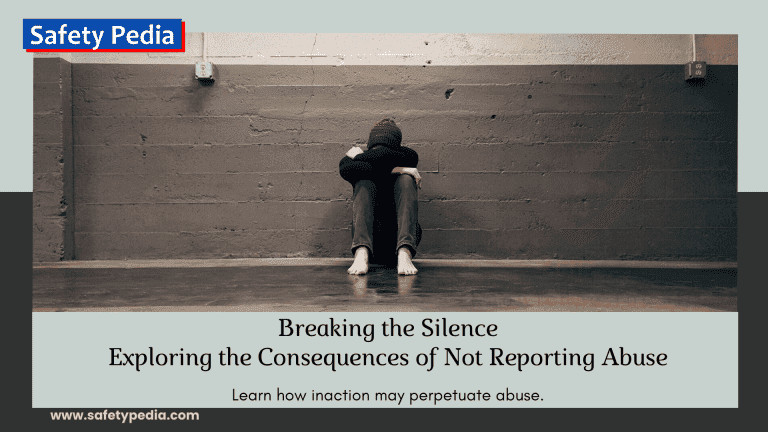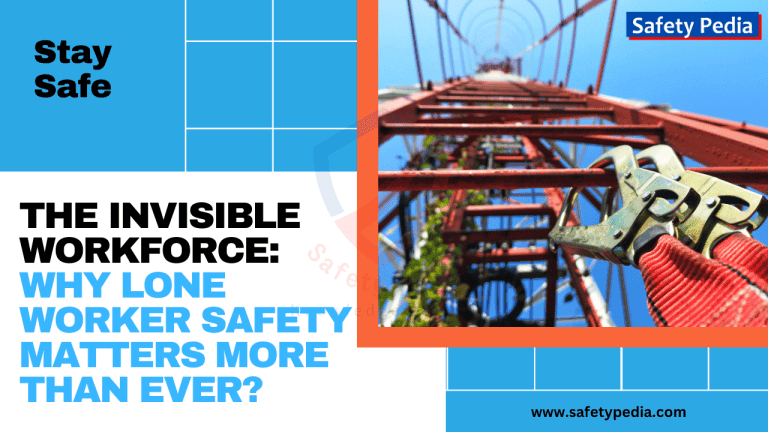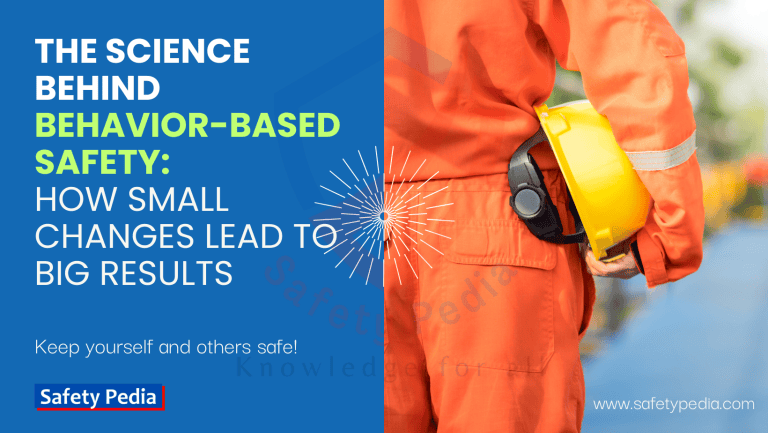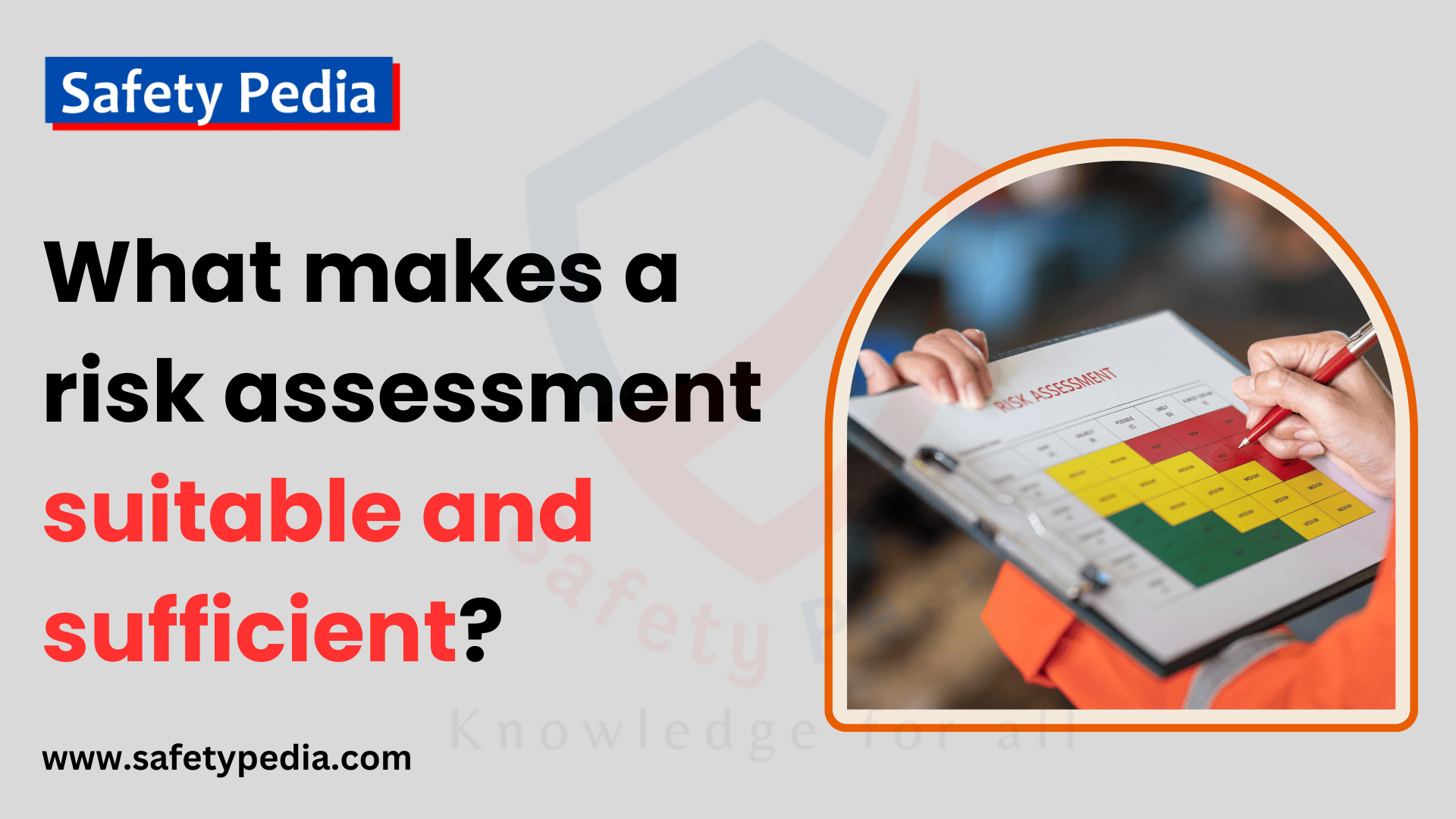
Introduction
If you are an employer or a self-employed person, you have a legal duty to carry out a risk assessment of your work activities. Risk assessment refers to the systematic process of identifying hazards, analyzing and evaluating associated risks, and implementing strategies to mitigate or manage those risks effectively that may cause harm to people, property, environment or reputation. A risk assessment should also include the measures that you will take to eliminate or reduce those risks.
But what does it mean for a risk assessment to be suitable and sufficient? And why is it important to conduct risk assessments in a legal and regulatory context? In this article, we will explore these questions and provide some guidance on how to conduct effective risk assessments that are suitable and sufficient.
Risk assessment is a fundamental pillar in ensuring the health and safety of any operational environment. Understanding the nuances of suitable and sufficient risk assessment is crucial for organizations aiming to safeguard their assets, people, and reputation. A suitable and sufficient risk assessment is one that covers all the significant hazards and risks, considers the likelihood and severity of harm, and takes into account the measures that are already in place or can be reasonably implemented to reduce the risk to an acceptable level.
Suitable and sufficient risk assessment is about finding the right balance between adequacy and complexity in assessing risks. A suitable and sufficient risk assessment is not only a legal requirement, but also a good practice that can benefit both employers and employees. By conducting a suitable and sufficient risk assessment, employers can:
According to the Health and Safety Executive (HSE), a risk assessment must be suitable and sufficient, which means:
- Risk assessment: A systematic process of identifying hazards, evaluating their likelihood and severity, and determining appropriate control measures to minimize harm.
- Suitable: refers to the type of process used to assess risk must be appropriate for the nature and scale of the activity, the level of detail required, and the competence of the assessor. For example, a complex chemical process requires a more in-depth analysis than a routine office task. Choose a method that fits the risk profile like the 5-step approach (identifying hazards, evaluating risks, determining controls, implementing controls, monitoring and reviewing).
- Sufficient: focuses on the amount of process done must be enough to ensure that all significant risks are identified and evaluated and that reasonable precautions are taken to minimize risk to an acceptable level. Remember, just ticking boxes is not sufficient. The assessment should be thorough, considering all potential dangers and involving relevant stakeholders like employees and safety experts. For example, a sufficient risk assessment should consider the likelihood and severity of harm, the number and characteristics of people exposed, the existing control measures, and the potential improvements.
Why risk assessment is important for health and safety
Conducting a suitable and sufficient risk assessment is not only a legal requirement under the Management of Health and Safety at Work Regulations 1999, but also a good practice and a proactive approach that can benefit everyone:
- Individuals: It protects workers, visitors, and anyone potentially impacted by the activity or environment.
- Organizations: It reduces the risk of costly accidents, legal action, and reputational damage.
- Society: It creates a safer work environment and contributes to a healthier and happier population.
Some of the benefits of risk assessment are:
- It can prevent accidents and ill health, which can cause human suffering, loss of productivity, damage to property, or legal claims.
- It can improve work efficiency and quality, by ensuring that the work environment and equipment are safe and suitable for the task.
- It can enhance worker engagement and morale, by involving them in the risk assessment process and demonstrating that their health and safety are valued.
- It can enhance the reputation, trust and confidence of the organization and its stakeholders
- It can comply with the legal and regulatory obligations, which can vary depending on the industry sector, activity type, or location. For example, some specific regulations may apply to certain hazards such as asbestos, chemicals, noise, or manual handling.
Understanding the Legal and Regulatory Context:
Risk assessment isn’t just about good practice; it often has legal teeth. Regulations across various industries mandate employers and individuals to conduct and maintain suitable and sufficient risk assessments. Failure to comply can lead to:
- Fines and penalties: Regulatory bodies can impose significant financial sanctions for non-compliance.
- Legal action: Injuries caused by inadequate risk assessment can result in lawsuits and personal liability.
- Reputational damage: Public awareness of safety negligence can severely damage an organization’s reputation.
Key Elements of a Suitable and Sufficient Risk Assessment
Risk assessment is a vital process for any organization that wants to ensure the safety and well-being of its employees, customers, and the public. A risk assessment helps to identify, analyze, and evaluate the hazards and risks associated with a specific activity or environment, and to implement appropriate control measures to reduce them to an acceptable level. However, not all risk assessments are created equal. There are some key elements that make a risk assessment suitable and sufficient for its purpose.
Scope, Coverage, Thoroughness and Comprehensiveness:
A suitable and sufficient risk assessment should cover all aspects of the activity or environment that could pose a risk to health and safety. This means:
Identifying all hazards and potential harm sources.
Identifying all hazards and potential harm sources that could cause injury, illness, or damage to property or the environment. Hazards can be physical, chemical, biological, ergonomic, psychological, or social.
Considering human factors.
Considering human factors that could influence the occurrence or outcome of an incident, such as human error, behavior, competence, limitations, motivation, stress, fatigue, etc. This involves recognizing how human actions or reactions might contribute to or mitigate risks.
Considering all individuals who might be affected.
In a suitable and sufficient risk assessment considers all individuals within the scope of the identified hazards, ensuring that risks to employees, contractors, visitors, or any other relevant parties are evaluated and managed effectively. Considering all individuals who might be affected by the activity or environment, not only the workers directly involved, but also contractors, visitors, customers, members of the public, etc.
Proportionality to the level of risk
The depth and complexity of the risk assessment should correspond proportionally to the potential level of risk involved. Higher-risk activities or environments might require a more detailed and comprehensive assessment compared to lower-risk scenarios. For example, a high-risk activity such as working at height would require a more thorough and comprehensive risk assessment than a low-risk activity such as using a computer.
Tailoring the assessment to the specific activity or environment.
Aligning the level of detail within the risk assessment process with the nature and complexity of the specific activity or environment is crucial. This involves customizing assessment methodologies to suit the unique characteristics of each situation.
A generic risk assessment may not capture all the relevant hazards and risks for a particular situation. Therefore, it is important to customize the risk assessment to reflect the specific characteristics and circumstances of the activity or environment. For example, a risk assessment for working in a laboratory would differ from a risk assessment for working in an office.
Clarity and Transparency in Reporting
A vital aspect of a suitable risk assessment is maintaining clear and transparent reporting methods. It involves documenting findings, conclusions, and recommendations in a manner that is easily understood and accessible to relevant stakeholders. A suitable and sufficient risk assessment should also be clear and transparent in reporting its findings and recommendations. This means:
- Using clear and concise language that is easy to understand by all stakeholders.
- Providing sufficient evidence and justification for the identified hazards, risks, and control measures.
- Highlighting any assumptions, limitations, uncertainties, or gaps in the risk assessment.
- Documenting the risk assessment process and results in a written report or record that can be easily accessed and reviewed.
Competency and Expertise of Risk Assessor
A suitable and sufficient risk assessment should be conducted by someone who has the necessary competency and expertise to carry out the task. This means:
Trained Personnel Conducting Assessment
Qualified and trained personnel should be responsible for conducting risk assessments. The person conducting the risk assessment should be competent on how to perform a risk assessment, including how to identify hazards, assess risks, implement control measures, communicate findings, etc.
Access to Specialized Knowledge or Consultants
The person conducting the risk assessment should also have sufficient knowledge and experience in the specific activity or environment being assessed. Access to specialized knowledge or consultants aids in addressing specific complexities or technical aspects within the risk assessment process. If required, they should consult with someone who does have such knowledge or expertise, such as a specialist consultant or an experienced colleague. For complex tasks, consider involving experts in relevant fields like engineering or psychology.
Assessment Process:
A suitable and sufficient risk assessment should follow a systematic and documented approach that ensures consistency and reliability.
Following a systematic and documented approach.
Following a systematic framework for evaluating likelihood and severity of risks. The person conducting the risk assessment should use a logical and structured method to assess the likelihood and severity of each hazard and risk. This could involve using a numerical scale (e.g., 1-5), a qualitative scale (e.g., low-medium-high), or a matrix (e.g., combining likelihood and severity into categories such as negligible-minor-moderate-major-catastrophic). Popular frameworks include HSE’s 5-step method, HAZOP (Hazard and Operability Study), and JSA (Job Safety Analysis).
Information sources
Information sources such as utilizing relevant data sources like regulations, industry best practices, and accident reports and historical data. The person conducting the risk assessment should base their judgments on reliable and up-to-date information sources that can provide evidence or guidance on the hazards, risks, and control measures for the activity or environment being assessed. These sources could include legal requirements, industry standards, codes of practice, scientific research, historical data, incident reports, etc.
There is a requirement to identify any hazards and reasonably foreseeable risk which may result from the hazard not being controlled.
Stakeholder involvement:
A suitable and sufficient risk assessment should involve relevant stakeholders throughout the process and utilize their input and feedback.
Involving relevant stakeholders and utilizing appropriate information sources.
Consulting with employees, their representatives, and other relevant parties with knowledge or experience in the activity or environment being assessed. These stakeholders can provide valuable insights into the hazards and risks involved in the activity or environment, as well as suggest effective control measures based on their practical experience.
Encouraging open communication and feedback throughout the process.
The person conducting the risk assessment should communicate clearly with all stakeholders about the purpose, scope, method, results, and recommendations of the risk assessment, and seek their opinions and suggestions on how to improve it. This cultivates a culture where all stakeholders feel comfortable sharing their observations and concerns.
Ensure commitment from all parties (senior management, employees and their representatives)
The person conducting the risk assessment should also ensure that all stakeholders are committed to implementing and maintaining the control measures recommended by the risk assessment, and that they understand their roles and responsibilities in doing so.
Inclusivity and Collaboration -Incorporating Diverse Perspectives
- Inclusivity: Ensure diverse perspectives are represented, including people with disabilities and those from different cultural backgrounds.
- Collaboration: Encourage open discussions, feedback loops, and joint decision-making.
Compliance with Regulations and Standards
A suitable and sufficient risk assessment should comply with the relevant legal requirements and industry standards that apply to the activity or environment being assessed.
- Stay updated: Regulations and standards frequently evolve, so regular review is crucial.
- Seek legal guidance: Consult with legal professionals to ensure compliance with specific requirements.
Adherence to Legal Requirements
The person conducting the risk assessment should be aware of and follow the applicable laws and regulations that govern health and safety in the activity or environment being assessed. These could include national, regional, or local laws, as well as specific regulations for certain sectors or activities (e.g., construction, mining, chemical, etc.). Compliance with laws and regulations helps in maintaining a safe and legally compliant working environment.
Following Industry Best Practices
The person conducting the risk assessment should also be aware of and follow the best practices and guidelines that are established by the industry or profession that is involved in the activity or environment being assessed. These could include standards, codes of practice, technical specifications, etc., that are developed by professional bodies, trade associations, or other organizations. Adhering to industry best practices ensures that risk assessment methodologies align with the most effective and recognized approaches within the respective industry.
Control Measures:
A suitable and sufficient risk assessment should identify and implement effective and practical control measures to reduce the risks to an acceptable level.
Prioritizing elimination and engineering controls
Prioritizing elimination and engineering controls such as prioritizing elimination of hazards at the source followed by other control methods like substitution, engineering, administrative, and lastly, PPE. The person conducting the risk assessment should use the hierarchy of control to select the most effective and feasible control measures for each hazard and risk. The hierarchy of control is a widely accepted principle that ranks the control measures from the most effective to the least effective, as follows:
- Elimination: removing the hazard completely from the activity or environment (e.g., using a different process or material that does not involve the hazard).
- Substitution: replacing the hazard with something less hazardous (e.g., using a less toxic or flammable substance).
- Engineering: isolating or minimizing the exposure to the hazard by using physical barriers or controls (e.g., using guards, ventilation, alarms, etc.).
- Administrative: reducing the exposure to the hazard by using organizational or procedural controls (e.g., providing training, supervision, signage, etc.).
- Personal protective equipment (PPE): protecting the individual from the hazard by using appropriate equipment or clothing (e.g., using gloves, goggles, masks, etc.).
Implementing effective and practical control measures.
The person conducting the risk assessment should ensure that the control measures identified are actually implemented and maintained in practice. This could involve:
- Developing an action plan that specifies who is responsible for implementing each control measure, when it should be done, how it should be done, and what resources are needed.
- Monitoring and reviewing the implementation of the control measures to ensure that they are working as intended and that they are not creating new hazards or risks.
- Updating and revising the risk assessment as necessary to reflect any changes in the activity or environment or in the control measures.
Choosing controls based on their ability to minimize risk to an acceptable level.
Ensuring implemented controls are reasonable and practicable. The person conducting the risk assessment should choose control measures that can effectively reduce the risk to a level that is acceptable to the organization and its stakeholders, taking into account the costs, benefits, and feasibility of the control measures. The acceptable level of risk may vary depending on factors such as:
- The legal requirements and industry standards that apply to the activity or environment.
- The nature and severity of the potential harm that could result from the hazard or risk.
- The likelihood of occurrence and exposure to the hazard or risk.
- The views and expectations of the stakeholders involved in or affected by the activity or environment.
Suggest controls that must deal with organizational level as well as individual level issues
The person conducting the risk assessment should also consider how to address both organizational and individual factors that could influence the effectiveness of the control measures. For example:
- Organizational factors could include leadership, culture, policies, procedures, resources, communication, etc., that could support or hinder the implementation and maintenance of the control measures.
- Individual factors could include competence, motivation, attitude, behavior, perception, etc., that could affect how people comply with or respond to the control measures.
Suggest Controls that are reasonably practicable:
The person conducting the risk assessment should also ensure that the control measures suggested are reasonably practicable to implement and maintain. This means that they are:
- Technically possible: they can be achieved with existing technology or technology that can be reasonably acquired or developed.
- Economically viable: they can be afforded by the organization without compromising its viability or profitability.
- Socially acceptable: they do not cause undue hardship or inconvenience to
Documentation and communication:
Maintaining detailed documentation of identified risks, control measures, and residual risks is essential. Clear communication of this information aids in informing stakeholders about potential hazards and mitigation strategies.
- Accessibility: Ensure everyone can understand the documentation, regardless of technical knowledge.
- Communication channels: Utilize multiple channels like meetings, training sessions, and online platforms.
Documenting and communicating control measures and residual risks.
Documenting identified hazards, chosen controls, and residual risks in a clear and accessible format.
Effectively communicating the assessment findings to all stakeholders.
Ensuring effective communication of assessment findings to all stakeholders is critical. Clear and concise communication promote understanding and facilitates the implementation of necessary actions.
Review and Monitoring:
Regularly updating the assessment based on changes and new information.
Risk assessments should undergo regular updates to incorporate any changes or new information that may impact identified risks. This ensures the assessment’s accuracy and relevance over time.
Implementing procedures to monitor the effectiveness of controls and assess the ongoing risk level.
Establishing robust procedures to monitor the effectiveness of implemented controls is essential. Regular monitoring ensures that control measures remain efficient in mitigating identified risks.
Monitoring the effectiveness of control measures and overall risk level.
Continuous monitoring of control measures and the overall risk level enables organizations to gauge the effectiveness of implemented strategies and make necessary adjustments.
Reassessment triggers
Define specific events or changes that necessitate a reassessment, e.g., accidents, equipment upgrades, or new regulations when necessary, preventing potential lapses in risk management.
Ensure remaining risk as low as reasonably practicable
Aim to reduce risk as much as possible within practical constraints. The overarching goal of continuous monitoring and reassessment is to ensure that the remaining risk is kept as low as reasonably practicable, in line with the organization’s risk tolerance and regulatory obligations.
What makes a risk assessment suitable and sufficient?
A risk assessment is a systematic process of identifying, evaluating and controlling the hazards and risks associated with a work activity or environment. A suitable and sufficient risk assessment should meet the following criteria:
But how do you know if your risk assessment is ‘suitable and sufficient’ as required by the law? The Health and Safety Executive (HSE) provides some criteria that you can use to check the quality of your risk assessment. These criteria are:
- It should be relevant to the nature and scale of the work activity or environment, taking into account the specific hazards and risks involved, the number and characteristics of the workers and other people who may be affected, and the legal requirements and standards applicable to the sector or industry.
- It should be comprehensive and thorough, covering all aspects of the work activity or environment, from planning and design to implementation and review. It should consider both normal and abnormal situations, as well as potential emergencies and accidents.
- It should be based on reliable and up-to-date information and data, obtained from various sources such as observation, consultation, inspection, testing, measurement, research and analysis. It should also take into account the views and feedback of the workers and other stakeholders who may be affected by the work activity or environment.
- It should be clear and concise, using simple and understandable language and terminology, avoiding jargon and technical terms that may confuse or mislead the readers. It should also use appropriate formats and tools such as tables, charts, diagrams, maps, checklists, matrices, etc. to present the information and data in a logical and coherent manner.
- It should be dynamic and flexible, adapting to changes in the work activity or environment, such as new or modified equipment, materials, processes, procedures, methods, etc. It should also be reviewed and updated regularly, especially when there are significant changes or incidents that may affect the level of risk or the effectiveness of the control measures.
- It should be appropriate to the nature of the work and the level of risk involved.
- It should consider all the relevant hazards, including those that are not obvious or routine. It should consider all possible hazards and risks, both existing and emerging, and their likelihood and severity. It should be relevant to the specific context and objectives of the activity, process or situation.
- It should be assessing probability and severity
- It should involve consultation with workers, worker representatives, managers, customers, contractors, regulators, etc., who may have valuable insights and suggestions.
- It should take into account the existing control measures and whether they are adequate or need improvement.
- It uses appropriate methods and tools to assess the likelihood and severity of harm, such as qualitative or quantitative techniques, checklists, matrices, scoring systems, etc.
- It should be based on reliable and up-to-date information and data, such as industry standards, guidance, research or best practices.
- It should be clear and concise, using simple and understandable language and avoiding jargon or technical terms.
- It should be documented and recorded, either in writing or electronically, and kept for future reference or review.
- It should be reviewed regularly and updated whenever there are significant changes in the work activity, equipment, personnel or environment, process or situation that may affect the risk level
- It should prioritize the most significant risks and identify the most effective and feasible control measures to eliminate or reduce them.
- It should document the findings and recommendations of the risk assessment and communicate them to the relevant parties.
A suitable and sufficient risk assessment should also be:
- Relevant: It should focus on the real risks that arise from the actual work activities, rather than hypothetical or trivial ones.
- Identifies all relevant hazards: It leaves no stone unturned, considering routine and non-routine tasks, potential emergencies, and impacts on various groups, including vulnerable individuals.
- Uses a relevant assessment method: The chosen method should be appropriate for the complexity of the risks and align with best practices and industry standards.
- Employs effective control measures: It prioritizes eliminating hazards at the source, followed by engineering controls, administrative controls, and lastly, personal protective equipment.
- Is documented and communicated: The identified hazards, chosen controls, and residual risks are clearly documented and communicated to everyone involved.
- Is regularly reviewed and updated: The assessment is not static and adapts to changes in the activity, environment, or control measures.
- Proportionate: It should not be overly complicated or burdensome, but reflect the level of risk and the resources available.
- Dynamic: It should be reviewed and updated regularly, especially when there are changes in the work activity, equipment, personnel, or environment.
General considerations may include:
- For small organisations a simple approach will be enough
- In many intermediate cases the risk assessment will need to be more sophisticated
- Large and hazardous sites will require the most developed and sophisticated risk assessments
- Risk assessments must consider all those who might be affected
- Employers are expected to take reasonable steps to help themselves identify risks
- The risk assessment should be appropriate to the nature of the work and should identify the period of time for which it is likely to remain valid
By following these criteria, you can ensure that your risk assessment is ‘suitable and sufficient’ and that you are complying with your legal obligations. A good risk assessment will also help you to prevent accidents and incidents, protect your workers and others from harm, improve your productivity and performance, and enhance your reputation and credibility.
Benefits of a Suitable and Sufficient Risk Assessment
- Benefits for safety and well-being
- Promotes safety and reduces the likelihood of accidents and injuries.
- Complies with legal and regulatory requirements.
- Improves decision-making and resource allocation for risk mitigation.
- Demonstrating due diligence
- Promotes a culture of safety awareness and risk management within an organization.
- Builds trust and confidence among stakeholders.
- Provides a foundation for continuous improvement in safety practices.
Challenges in Achieving “Suitable and Sufficient”
- Lack of awareness about risk assessment methodologies.
- Difficulty in identifying all potential hazards and their impacts.
- Implementing and maintaining effective control measures.
- Ensuring regular review and updates of the assessment.
- Resource constraints
- Inadequate skills or expertise
- Changing environments and processes
Challenges in Conducting Suitable and Sufficient Risk Assessments
- Uncertainty and Complexity of Risks
- Dealing with Unknown Variables
- Managing Dynamic Risk Landscapes
- Variations in Different Industries
- Resistance to Change
- Organizational Barriers
- Cultural or Behavioral Challenges
Conclusion
In conclusion, a “suitable and sufficient” risk assessment stands as a foundational pillar in the domain of health and safety, encapsulating a multifaceted approach pivotal for organizational well-being. By implementation of the principles of “suitable and sufficient” risk assessment, you not only safeguard health and well-being, but also adhere to legal and regulatory requirements. Remember, it’s a continuous process; regularly update your assessments to adapt to changing circumstances and ensure maximum protection against potential harm.
The benefits of implementing a suitable and sufficient risk assessment are manifold. Primarily, it serves as a proactive tool in safeguarding the health and safety of individuals, mitigating potential hazards, and preventing accidents or incidents that could compromise workplace safety. Additionally, it aids in resource allocation, informed decision-making, and regulatory compliance, cultivating a culture of safety within an organization.
A suitable and sufficient risk assessment is not a one-off exercise, but a dynamic and ongoing process that should be reviewed and updated regularly, or whenever there is a significant change in the work activity or environment. By conducting a suitable and sufficient risk assessment, employers can ensure that they provide a safe and healthy workplace for their workers and others, and fulfill their legal and moral duties. Therefore, it is essential to implement the findings of the risk assessment and strive for continuous improvement in health and safety performance.
Moving forward, recommendations for further actions or improvements include ongoing training and development to enhance the competency of personnel involved in risk assessments. Emphasizing continuous improvement in methodologies, technology integration for more precise assessments, and cultivating a culture that encourages open communication and feedback are essential.
As a call to action, organizations are urged to implement and consistently improve their risk assessment practices. This involves building a proactive approach to risk management, integrating safety measures into everyday operations, and dedicating resources to ensure the continual evolution of risk assessment methodologies. Encouraging a culture that prioritizes health and safety at all levels and continuously striving for excellence in risk management is essential for sustained success and a secure work environment.
In essence, the commitment to conducting suitable and sufficient risk assessments is not merely a legal obligation but a strategic investment in safeguarding human lives, protecting assets, and promoting sustainable organizational growth. The continual pursuit of excellence in risk assessment practices remains pivotal in nurturing safer and healthier work environments for all.
References:
https://www.hse.gov.uk/stress/standards/equivalence.htm
https://www.ncbi.nlm.nih.gov/pmc/articles/PMC3617507/
Your one click can make a difference
Keep sharing and promoting health and safety awareness!
Related posts:
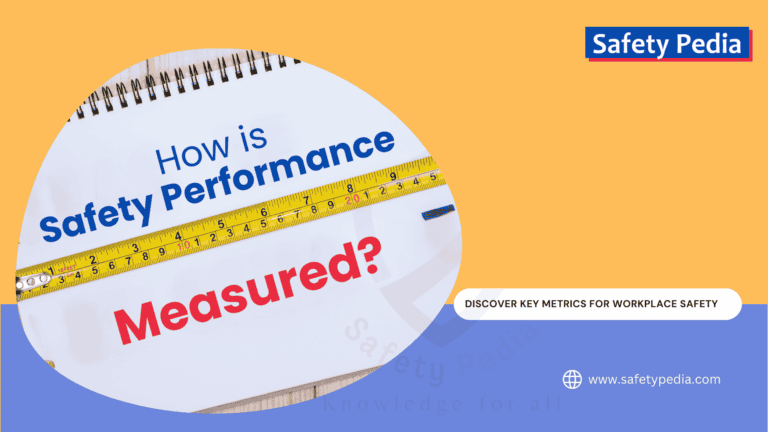
How to Measure Safety Performance?
Struggling to measure your workplace safety performance? Learn how to measure safety performance with key metrics to improve workplace safety. Discover essential indicators for risk assessment, compliance, and accident prevention.
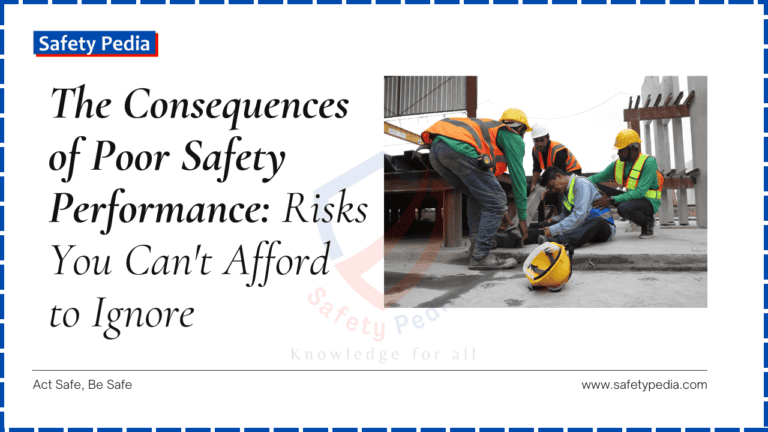
The Consequences of Poor Safety Performance: Risks You Can’t Afford to Ignore
Discover the potential consequences of poor safety performance in the workplace and how they can negatively impact both employees and the company as a whole.
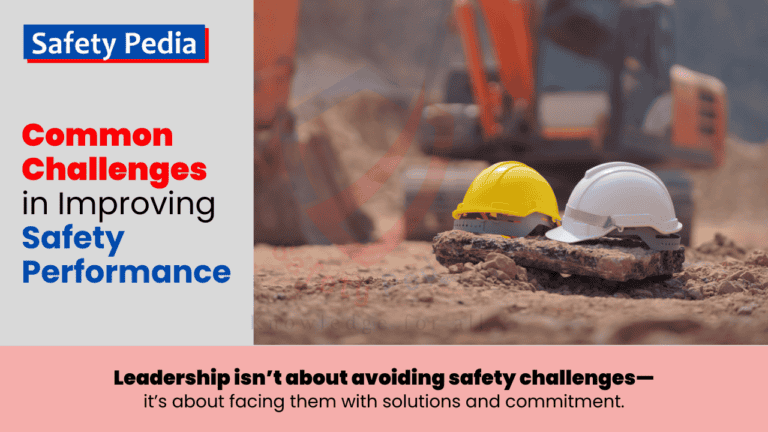
18 Common Challenges in Improving Safety Performance at Work
Discover 18 common challenges in improving safety performance at work. Learn how to overcome these obstacles for a safer workplace.
Join Our Safety Community!
Stay informed with the latest tips and insights on occupational health, safety, and the environment.
